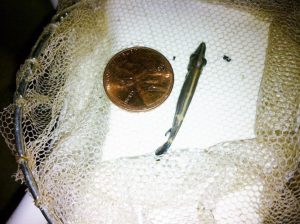#GARWEEK: Managing Alligator Gar
Wednesday, June 13th, 2018This is Passport to Texas
As popularity of alligator gar increases in Texas, fisheries managers want to ensure the harvest of these fish is sustainable.
Due to increased interest and popularity – and the fact that alligator gar have been extirpated from much of its native range – Texas Parks and Wildlife took steps in 2009 to protect and preserve the future of this species in Texas waters.
Greg Binion, a fisheries biologist, says a conservative one-fish daily bag limit implemented by Texas Parks and Wildlife in 2009, helped to restore quality trophy populations to several Texas fisheries, including Choke Canyon Reservoir near San Antonio.
Our management goal for this fishery is to enhance and protect the trophy component of this fishery, and we are using the 1-fish daily bag as one of the tools in our tool box to accomplish this goal. This appears to be working well, as we have several reports and confirmed catches from anglers regularly catching trophy-sized fish in excess of 6 and 7 foot in length.
In the 1980’s, this reservoir was commercially fished down to the point where the gar couldn’t reach trophy size in large numbers. Now in a rebuilding phase, things are looking up for both alligator gar and anglers alike.
Most of the fish in the Choke population are 15-25 years old, so we are very excited about the next 10 years or so as these fish continue to grow and increase the numbers of trophy-size fish in the population
The Sport Fish Restoration Program supports our series; your purchase of fishing equipment and motor boat fuels keep the wild in Texas alive.
For Texas Parks and Wildlife…I’m Cecilia Nasti.



 Passport to Texas is a
Passport to Texas is a  Passport to Texas is made available by:
Passport to Texas is made available by: